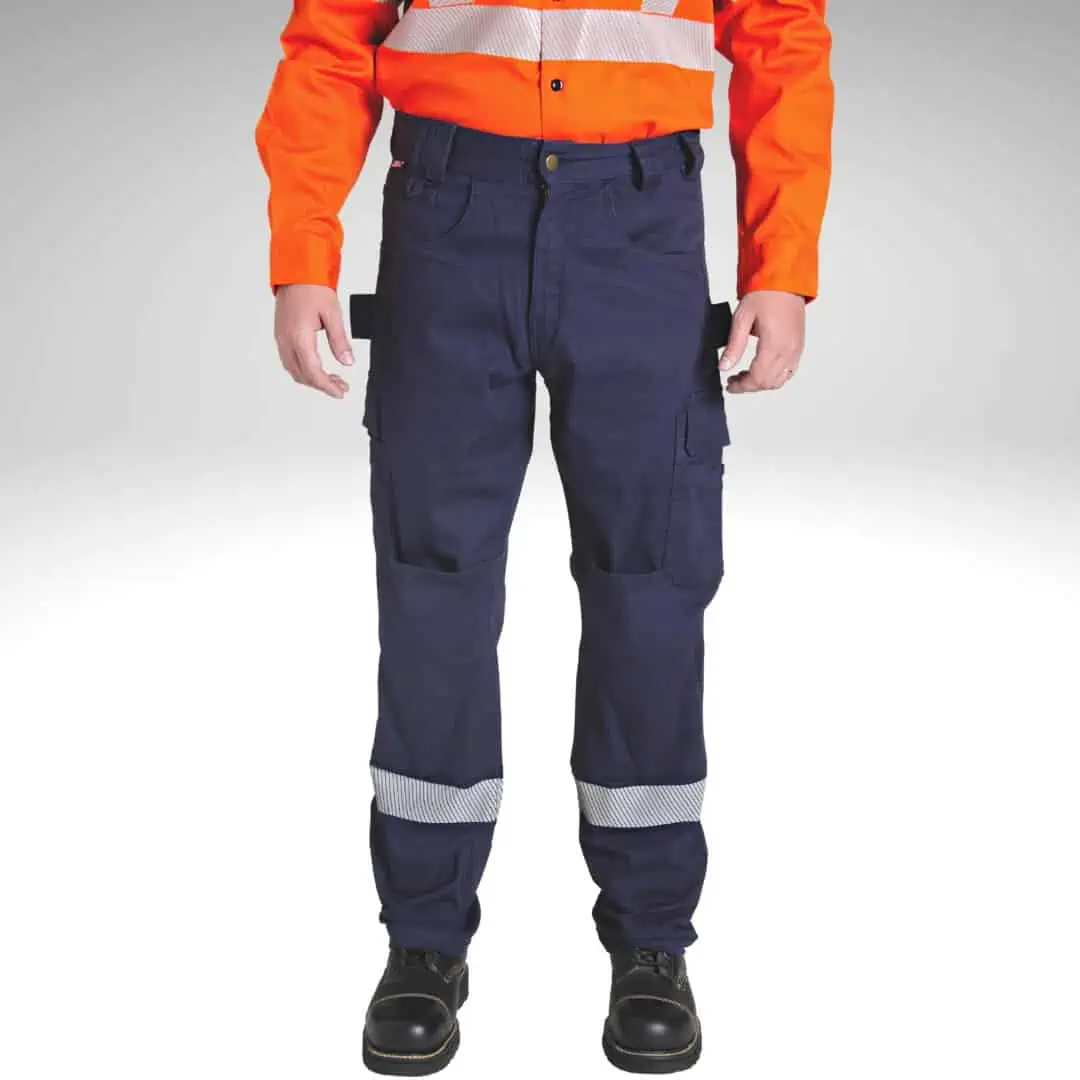In jobs where employees/workers face electric arc, flame, and molten metal hazards, wearing fire-resistant garments is mandatory. Fire-resistant clothing consists of materials that resist ignition and burns when workers or employees encounter electric arcs and fire.
Fire Resistant Pants are protective gear that protects the wearer from heat and fire-related injuries. The garments have the potential to withstand high temperatures before igniting and melting into the skin.
Because flame-resistant pants and jackets don’t transfer heat as standard fabrics, they are ideal for industrial use.
What are Flame-Resistant Pants?
It is a wearable pant made from fabrics that naturally stop electric arc and fire flames. Power and electric industry workers and employees must wear flame-resistant pants and covers. Picking top-quality, industry-grade FR garments is a must to eliminate the risks of burn injuries and deaths at the workplace.
Because of self-extinguishing features, the garments don’t ignite and eliminate the possibility of burning and melting the skin.
How do Flame-Resistant Pants Work?
For clothing to be flame-resistant, the fabric should self-extinguish and withstand high temperatures. PPE jackets and pants have arc and flame protective features. It helps to endure potentially dangerous and challenging working conditions in the electric and power industry. The zips and buttons in flame-resistant clothing are non-conductive.
It indicates that they don’t melt on the skin. There is thermal insulation that protects the skin from heat and burns injuries. Apart from protecting against direct heat, the FR garments safeguard against molten metal splashes.
Factors to Consider When Selecting FR Garments
When looking for flame-resistant clothing, it is pivotal to consider the following:
Level of Protection: FR Jackets and Pants
Depending on the tasks by employees or workers while wearing Flame Resistant Pants and Jackets, there are different levels of protection. FR PPE manufacturers list the hazard risk category to ensure that the garments chosen offer optimal protection.
There are grades for FR pants and jackets for different risks and hazards. Industry workers should wear the ideal PPE to prevent burn injuries and death.
Level of Comfort: FR Clothing
Comfort is a concern when picking flame-resistant clothing. Workers/employees wear it all day in hot and cold weather conditions. Furthermore, doing manual labor for long hours makes things difficult when the protective PPE is too heavy or uncomfortable to wear.
If the FR clothing safeguards against skin burns but overheats and gets in the way of completing the tasks, it hampers their productivity.
Maintenance of FR Garments
To retain the flame-resistance properties and continue to render optimal protection to the wearer, cleaning, and maintenance should follow the manufacturer’s directions. Some manufacturers practice strict cleaning and maintenance guidelines. It becomes challenging when employers/workers wear FR pants and covers daily for long hours.
Different Types of Flame-Resistant Garments
Workers or employees pick flame-resistant pants and jackets that suit different weather conditions and address safety concerns.
Poor Visibility
When industry workers/employees work outside, at night, or during traffic, it is pivotal to pick visible Flame Resistant Pants and Jackets.
Rain, Snow, and Sleet Conditions
Advancement in textile engineering has led to flame-resistant outerwear clothing that resists heat and electric flames and deflects snow and rain.
High Heat Conditions
Lightweight FR garments are the best alternative for protecting employees or workers. It is ideal for workers who wear FR gear in high temperatures for prolonged hours.
Cold Weather Conditions
Employees or workers in the power and electric industry should pick cold-resistant FR pants, jackets, overcoats, hoodies, sweaters, and covers. It protects them against burns and frosting at the same time.
If workers/employees have to wear a regular uniform with an embroidered name tag or a logo, it should be made using FR threads.
Conclusion
FR garments are a job requirement for the electric and power industry. It is wise to wear Flame Resistant Pants and covers where there is a potential for flames, sparks, and fire explosions. Irrespective of how and when they are worn, FR garments shouldn’t have tears and rips.
The maintenance of flame-resistant clothing should be taken seriously to ensure adequate protection against heat and flames. When choosing an FR garment, the wearer should consider the comfort and the level of protection.

